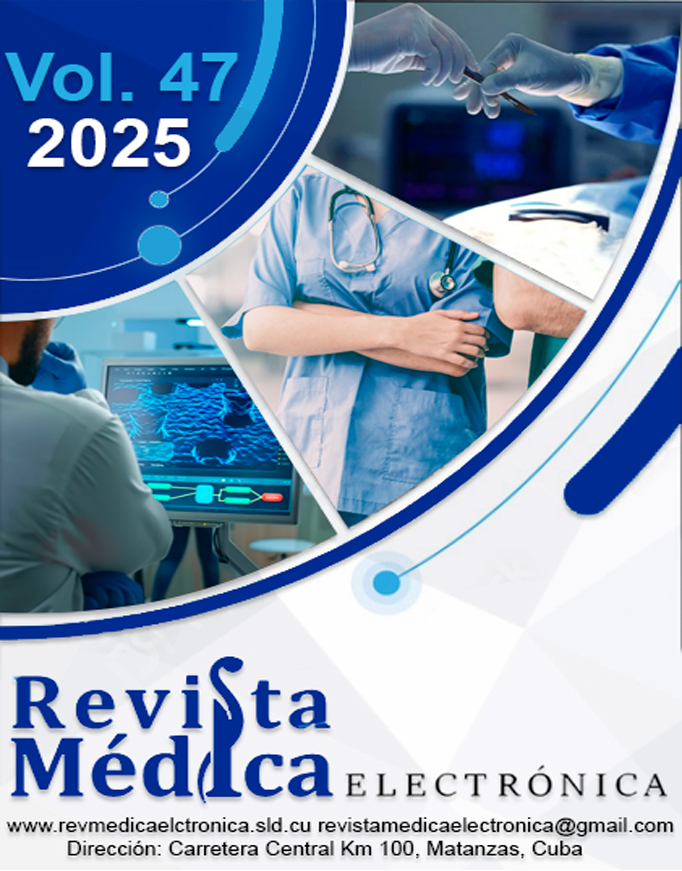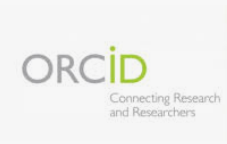Proposal for educational intervention on preconception risk in female adolescents
Keywords:
educational intervention, adolescents, preconception reproductive risk, methodsAbstract
Introduction: Among the family physician programs, one of the most important is maternal and perinatal risk prophylaxis, along with preconception reproductive risk control.
Objective: to determine the effectiveness of the application of an educational intervention program to modify the level of knowledge about preconception risk in female adolescents.
Methods: A pre-experimental study with pre-test and post-test was carried out to evaluate the effectiveness in the application of an educational intervention program to modify the level of knowledge about preconception risk in female adolescents belonging to Doctor’s Office Nr. 6 of the Health Area Máximo Gómez, of Chambas, in Ciego de Ávila, in the period from November 2022 to January 2024. The study universe consisted of 33 adolescents of childbearing age between 14 and 18 years.
Results: late adolescence and secondary school level predominated. Most participants had adequate initial levels of knowledge about contraceptive methods and preventive measures to avoid risk in pregnancy, while initial levels of knowledge on topics such as factors that constitute preconception risk and complications of preconception risk complications were very low.
Conclusions: The topics taught presented a positive and significant modification in the level of knowledge about preconception risk, so the applied training was considered effective.
Downloads
References
1. Organización Mundial de la Salud. Mortalidad materna [Internet]. Ginebra: Organización Mundial de la Salud; 2019 [citado 02/02/2023]. Disponible en: https://www.who.int/es/news-room/fact-sheets/detail/maternal-mortality
2. Quintero Paredes PP. Caracterización del riesgo reproductivo preconcepcional en las mujeres en edad fértil. Arch Méd Camag [Internet]. 2021 [citado 08/02/2023];25(3). Disponible en: http://www.revistaamc.sld.cu/index.php/amc/article/view/7795/4085
3. Zetina Hernández E, Gerónimo-Carrillo R, Herrera-Castillo Y, et al. Factores de riesgo reproductivo preconcepcional en mujeres en edad fértil de una comunidad de Tabasco. Salud Quintana Roo [Internet]. 2018 [citado 02/05/2020];11(40):7-10. Disponible en: https://www.medigraphic.com/pdfs/salquintanaroo/sqr-2018/sqr1840b.pdf
4. Miranda Hardi DC, Cañete Téllez E. Estrategia de intervención al riesgo preconcepcional reproductivo del CMF Ciruelito. Jobabo, Las Tunas. Rev caribeña cienc soc [Internet]. 2020 [citado 21/05/2020]. Disponible en: https://www.eumed.net/rev/caribe/2020/03/riesgo-preconcepcional-reproductivo.html
5. Fernández Ramos H, Crespo Estrada Y, Estrada Astral IL, et al. Impacto de una estrategia de intervención comunitaria sobre el control del riesgo reproductivo preconcepcional. Arch Méd Camag [Internet]. 2008 [citado 21/05/2020];12(3). Disponible en: http://scielo.sld.cu/scielo.php?script=sci_arttext&pid=S1025-02552008000300007
6. González Portales A, Rodríguez Cabrera A, Jiménez Ricardo M. Caracterización de mujeres con riesgo preconcepcional en un consultorio médico. Rev Cubana Med Gen Integr [Internet]. 2016 [citado 02/08/2024];32(2):178-90. Disponible en: http://scielo.sld.cu/scielo.php?script=sci_arttext&pid=S0864-21252016000200005&lng=es
7. Polanco Rosales A, Trinchet Rodríguez RA, Martínez Fonseca BA, et al. Caracterización de mujeres con riesgo preconcepcional en el CMF 24. Policlínico René Vallejo Ortiz. Multimed [Internet]. 2019 [citado 21/05/2020];23(6):1232-50. Disponible en: http://scielo.sld.cu/scielo.php?script=sci_arttext&pid=S1028-48182019000601232
8. Dirección de Registros Médicos y Estadísticas de Salud. Anuario Estadístico de Salud 2020 [Internet]. La Habana: MINSAP; 2021 [citado 02/08/2023]. Disponible en: https://files.sld.cu/bvscuba/files/2021/08/Anuario-Estadistico-Espa%C3%B1ol-2020-Definitivo.pdf
9. Hierrezuelo Rojas N, Alvarez Cortés JT, Subert Salas L, et al. Calidad del proceso en la ejecución del programa de riesgo reproductivo preconcepcional. MEDISAN [Internet]. 2017 [citado 11/01/2018];21(2). Disponible en: http://medisan.sld.cu/index.php/san/article/view/1347
10. Gómez LA, Ruiz Pupo Y, Quintero Marrero L. Estrategia de intervención para disminuir el embarazo en la adolescencia. Roca [Internet]. 2023 [citado 02/08/2024];19(2). Disponible en https://openurl.ebsco.com/EPDB%3Agcd%3A9%3A33663929/detailv2?sid=ebsco%3Aplink%3Ascholar&id=ebsco%3Agcd%3A164759109&crl=c&link_origin=scholar.google.es
11. Álvarez García YdR, Moreno Muñoz B, Rodríguez Aldana AM. Factores biopsicosociales asociados al riesgo preconcepcional CMF No 9. Campechuela. Multimed [Internet]. 2019 [citado 21/05/2020];23(6):1349-67. Disponible en: http://scielo.sld.cu/scielo.php?script=sci_arttext&pid=S1028-48182019000601349
12. Figueredo Fonseca M, Fernández Núñez D, Hidalgo Rodríguez M, et al. Factores de riesgo asociados al riesgo reproductivo preconcepcional. Niquero. Granma. Multimed [Internet]. 2019 [citado 21/05/2020];23(5). Disponible en: http://www.revmultimed.sld.cu/index.php/mtm/article/view/1358/1554
13. Garcés García AE, Casado Méndez PR, Santos Fonseca RS, et al. Caracterización de la conducta sexual y reproductiva en adolescentes femeninas de 12 a 15 años. Rev Méd Electrón [Internet]. 2019 [citado 21/05/2020];41(2). Disponible en: https://www.medigraphic.com/pdfs/revmedele/me-2019/me192d.pdf
14. Puentes Colombe M, Magalhaes Puentes HA, Suco Cáceres K, et al. Comportamiento del riesgo reproductivo preconcepcional en mujeres fértiles de San Juan y Martínez. Rev Ciencias Médicas [Internet]. 2019 [citado 21/05/2020];23(6). Disponible en: http://www.revcmpinar.sld.cu/index.php/publicaciones/article/view/3971/pdf
15. García Hermida MI, Lucero Arcos GP. Riesgo preconcepcional y embarazo en la adolescencia desde un enfoque epidemiológico y preventivo. Rev Eugenio Espejo [Internet]. 2019 [citado 21/05/2020];13(1):88-112. Disponible en: https://www.redalyc.org/jatsRepo/5728/572860987009/html/index.html
Downloads
Published
How to Cite
Issue
Section
License
Copyright (c) 2025 Revista Médica Electrónica (Medical Electronic Journal)

This work is licensed under a Creative Commons Attribution-NonCommercial 4.0 International License.
All content published in this journal is Open Access, distributed under the terms of the CC BY-NC 4.0 License.
It allows:
- Copy and redistribute published material in any medium or format.
- Adapt the content.
This will be done under the following terms:
- Attribute the authors' credits and indicate whether changes were made, in which case it must be in a reasonable way.
- Non-commercial use.
- Recognize the journal where it is published.
The copyrights of each article are maintained, without restrictions.






